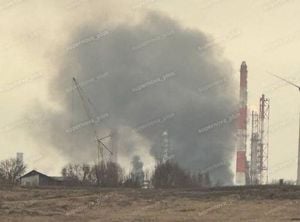For skywatchers across the United States, this week is shaping up to be one for the record books. Following a series of powerful solar eruptions, the northern lights—usually reserved for the high latitudes of Alaska and Canada—are making a rare and dramatic appearance much farther south, potentially lighting up skies from Washington to Alabama and even northern California. The cause? A potent combination of solar flares and coronal mass ejections (CMEs) that have set off one of the most intense geomagnetic storms of the current solar cycle.
According to the U.S. National Oceanic and Atmospheric Administration’s (NOAA) Space Weather Prediction Center (SWPC), multiple solar flares erupted from the sun earlier this week, including an X1.7 on Sunday, an X1.2 on Monday, and, most notably, an X5.1 flare early on Tuesday, November 11, 2025. As reported by Nexstar, this X5.1 event is the strongest solar flare of the year and the most powerful since the X9.0 flare in October 2024, which made the aurora widely visible over Massachusetts. The resulting CME from this latest flare blasted out from the sun at speeds up to 4.4 million miles per hour, racing toward Earth and setting the stage for a remarkable celestial show.
NOAA’s SWPC quickly issued a severe G4 geomagnetic storm watch, with the storm expected to reach G3 strength by 10 p.m. ET on Tuesday and surge to G4—severe—levels by Wednesday morning. As outlined by NBC 5, the forecast called for a spike in geomagnetic activity around 9 p.m. to midnight Tuesday, and an even bigger peak between 9 a.m. and noon on November 12. Such storm levels are rare and significant: while a G1 event is considered minor, G4 storms can have wide-ranging effects, from dazzling auroras to disruptions of power grids, communication networks, and GPS systems. The SWPC’s planetary Kp index, which predicts how far south the aurora might be visible, was forecasted to hit 7—another clear indicator of an exceptionally strong event.
But what does this mean for those hoping to catch a glimpse of the northern lights? The answer, in short, is opportunity. As explained by the SWPC and echoed by outlets like Wicked Local and The Hill, the aurora borealis could be visible across a vast swath of the United States. Northern states—Alaska, Washington, Oregon, Idaho, Montana, Wyoming, North Dakota, South Dakota, Nebraska, Minnesota, Iowa, Wisconsin, Illinois, Michigan, Indiana, Ohio, Pennsylvania, New York, Massachusetts, Vermont, New Hampshire, and Maine—are in the prime viewing zone. However, the storm is so intense that it might even push the lights into parts of Nevada, Utah, Colorado, Kansas, Missouri, Kentucky, West Virginia, Virginia, Maryland, and New Jersey. In fact, only Louisiana, Florida, and Hawaii are expected to miss out entirely, according to Nexstar’s reporting.
For residents of mid-Missouri, Chicago, and even as far south as Alabama and northern California, this is a rare treat. As described by meteorologists from local outlets and reinforced by NOAA’s guidance, the best chance to see the aurora is between 10 p.m. and 2 a.m., with the SWPC’s three-day forecast suggesting optimal viewing between 11 p.m. Tuesday and 5 a.m. Wednesday. “We typically suggest getting away from cities and find an open field or hilltop to lay out under the stars and wait for the show to really peak at the late evening or early morning hours,” said Tim Brothers, Technical Instructor and Observatory Manager at the Massachusetts Institute of Technology, in an interview with Wicked Local.
Of course, nature has its own caveats. Cloud cover could limit visibility in some areas, particularly in Massachusetts and parts of New England, as noted by AccuWeather and The Hill. And while the geomagnetic storm is forecasted to peak during daylight hours in some regions, there’s still a good chance the aurora will persist into the night, especially if the storm’s intensity holds.
So, what exactly is happening up there? Solar flares are sudden eruptions of energy from the sun, lasting minutes to hours, and are classified by strength—B-class being the weakest, then C, M, and finally X-class, which packs the most punch. Each step up represents a tenfold increase in energy output. The X5.1 flare that erupted on November 11 is a major event, powerful enough to cause radio blackouts, as it did in Europe and Africa, according to NBC 5’s Storm Team. When these flares are accompanied by CMEs—giant clouds of plasma and magnetic material—Earth’s magnetosphere can be bombarded with charged particles. When these ions collide with our atmosphere, they release energy as light, painting the sky in shades of red, pink, and green.
But with the beauty comes risk. As NOAA and NASA have both cautioned, strong geomagnetic storms can impact critical infrastructure. Power grids, satellite operations, and even migratory animals can feel the effects. Fortunately, most utilities and companies have safeguards in place. The SWPC noted, “There may be detrimental impacts to some of our critical infrastructure technology… mitigation is possible.”
Why are we seeing so many auroras lately—and why so far south? The answer lies in the sun’s 11-year solar cycle, which is currently in an upswing. As sunspots migrate toward the sun’s equator and their magnetic fields tangle, more frequent and powerful solar storms erupt. This cycle is expected to wind down starting in 2025 and bottom out by 2035, so skywatchers can expect more opportunities to catch the northern lights in the coming years, as reported by local meteorologists and NOAA scientists.
For those eager to join the hunt, experts recommend checking real-time aurora forecasts and heading to locations far from city lights. Even if the naked eye doesn’t catch the full spectacle, a long-exposure photo with a phone or camera might reveal colors and patterns otherwise invisible. As always, patience and a bit of luck go a long way.
With solar activity surging and the aurora borealis reaching places it rarely visits, Americans from coast to coast have a rare chance to witness one of nature’s most mesmerizing displays. Whether you’re in the far north or the heart of the Midwest, this week’s sky show promises to be unforgettable—if the clouds cooperate and you know where to look.




